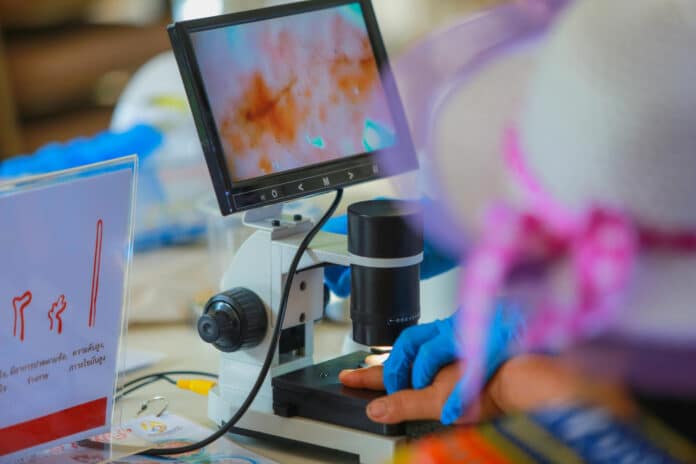Rice University researchers, led by Luay Nakhleh, discovered a new MaCroDNA method for combining DNA and RNA data from single cells. This method is faster and more accurate than previous technologies.
By tracking mutations at the single-cell level, researchers hope to understand better how cancer starts and progresses. This could lead to improved early detection and treatment options. Mohammadamin Edrisi, a Rice University graduate student, led the study published in Nature Communications.
Mohammad Amin Edrisi, a Rice Ph.D. student in computer science and lead author of the study, said, “Imagine you are given two large sets of photos of cars with the license plates and other identifying features blurred. One set contains photos of the cars taken from the front, while the other set has photos of the back, and someone asks you to find the pairs of photos that belong to the same car. This is a metaphor for the problem we have tried to solve. The cars are cancer cells, and the two sets of photos are DNA and RNA data measurements.”
Nakhleh, the study’s lead author, explained, “In a typical cancer single-cell sequencing experiment, the DNA and RNA data come from different cells in the tumor. So we’re trying to match data from cells we know are different.”
By trying to match photos of the front or back of different Toyota cars, there is a need to find pairs of pictures from the same model — like the front and back of a Toyota Camry or a Toyota Corolla. In a tumor, different clones are like different car models. They’re similar but not identical in their DNA and RNA.
Over the last ten years, single-cell sequencing has advanced significantly, aiding discoveries in biology. This technique helps researchers understand how genetic changes affect cell behavior, especially in cancer.
Mohammadamin Edrisi mentioned that “cancer cells show abnormal RNA patterns due to DNA mutations. The team tested different methods using accurate biological data to find the most effective tool for their research.”
“We tested different methods, including the clone-align, using a real dataset with known accuracy. Previous studies used simulated data, which may not accurately represent real scenarios.” He added
From their tests, the researchers found that using a classical correlation coefficient and an algorithm from the 1950s produced the most accurate results. This approach, incorporated into MaCroDNA, surpassed clonealign by a significant margin.
Edrisi said, “The surprising part was that a simple method outperformed a more complex one. This teaches us not to judge algorithms solely on complexity but to give them a fair chance in comparison.”
The data processing tool shows excellent potential in knowing better early-stage cancer detection.
Journal reference:
- Edrisi, M., Huang, X., Ogilvie, H.A. et al. Accurate integration of single-cell DNA and RNA for analyzing intratumor heterogeneity using MaCroDNA. Nature Communications. DOI: 10.1038/s41467-023-44014-3.
